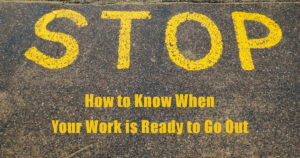 On a road trip to Maine there were four of us, plus two google-navigating cell phones, one road atlas and a GPS device to “bind them all.” Needless to say, whoever was driving was besieged by three or four opinions about where to turn and which was the best route. (After the GPS led us on a few merry dead-ends, we could only partially count on her expertise.)
On a road trip to Maine there were four of us, plus two google-navigating cell phones, one road atlas and a GPS device to “bind them all.” Needless to say, whoever was driving was besieged by three or four opinions about where to turn and which was the best route. (After the GPS led us on a few merry dead-ends, we could only partially count on her expertise.)
The driver was in the unenviable position of glancing at the GPS map, listening to our arguments about where to turn, and our mutterings about how “the way” was lost in the gutter—this by the one who kept peering at the printed road atlas. And, of course, there was the voice of unembodied reason who calmly directed us to “turn here.” Which would have been right into a cranberry bog.
You are in the driver’s seat
I won’t argue that one should never listen to a wide range of opinions on many things, but sometimes we need to remember that the driver has control of the wheel. Ultimately, the driver makes the decisions. This holds true for creatives who will at some point say, have I turned a corner? Is my work ready to go out into the world?
There are many worries: is my work polished enough? Have I done everything I wanted to? Have I put as much heart into the piece as I am capable of? What if it’s too rough?
I have a writer friend who’s been tinkering with his novel for many years. When he reads, critique partners tell him “do this.” “Go this way.” “Back-up.” “Head back the way you were going.” Poor driver—bewildered writer.
Not long ago I got an email saying, he was sending it out. He wasn’t “getting any younger.” Yes! I was so glad to hear this, for there simply comes a point at which you must trust your gut and go for it. After all, you can spend years traveling in circles, following written or online instructions to make your work a pièce de résistance and still end up facing a cranberry bog.
What to ask yourself—before you decide
Having said all this, it’s time for me to give you my own bit of back-seat advice. However, you’re the driver. You may heed it, or not. Perhaps you need time to ponder the cranberry bog and shut out all the voices? A good rest at a peaceful spot can do wonders. But when you’re ready to carry on and get your creative work out, I think there are only a few questions you need to answer for yourself.
- Have I spent time “re-envisioning” my work so that it feels complete to me? (You’ve not just noodled with the sentences. Real revision.)
- Have I spent time re-envisioning my work so that it feels smooth to me?
- Have I spent time re-envisioning my work so that it feels alive to me?
- Can I tell someone, in one or two sentences, what it’s about?
These are not easy questions to answer. But answer, you must. Complete: have I given my audience as much as is needed to arrive at the heart of my work? Smooth: Have I paved the way to the heart of my work so my audience won’t get lost traveling there? Alive: Have I breathed into my work the emotion necessary so that my audience will be eager to travel there? (Question #4 is self-evident.)
Even after many books, I don’t always feel confident answering these questions for myself. But I do. I must. I can’t sit here, lost in front of a bog forever . . . no matter how beautiful it is. I must grip that wheel and make a decision.

Lee Gramling
I’ve known writers like those described too, who can’t seem to “get it right.” One worked on the same novel for years, the other on a play. Neither, to my knowledge, ever wrote anything else.
That’s just plain silly. Psychologists call it “completion anxiety.” The simple fact is, nothing is ever perfect. You have to decide when “good enough” is good enough! And if it isn’t good enough after a couple of rewrites, then toss it in the back of the file cabinet and WRITE SOMETHING ELSE! The more you write, the better your work will get.
I’ve got a “first novel” in the back of a drawer that won’t ever see the light of day, and I’ll bet almost every published author can say the same. What counts is the SECOND (or third or fourth) one!